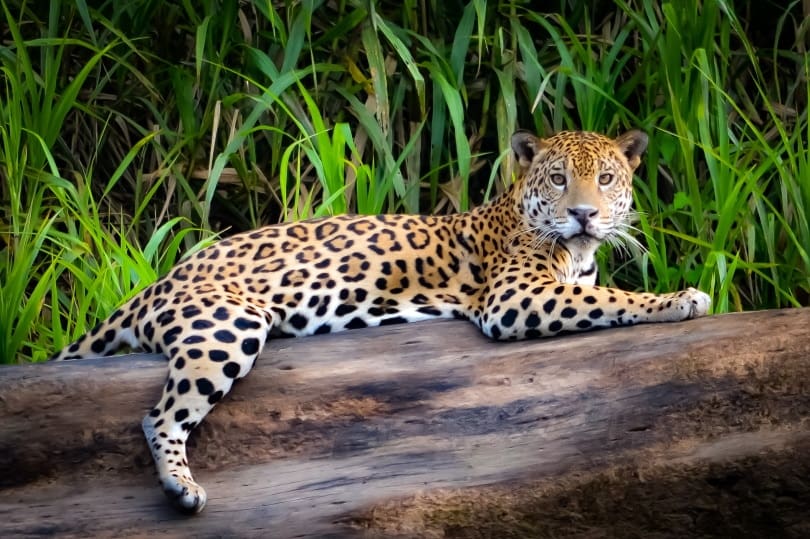We all know that cats purr, meow, and hiss, among other cat-like sounds. But have you ever wondered what kinds of sounds their larger and wilder cousins make? Do large cats like jaguars and panthers purr? What about lions and tigers?
Some of the big cats purr and others do not. More specifically, panthers and jaguars can’t purr.
Here, we go over which big cats can and can’t purr and the kinds of other noises that they all make. We also look at why these gorgeous cats would even purr in the first place.

What Sounds Do Panthers and Jaguars Make?
While panthers and jaguars certainly make vocalizations that sound similar to purring, it is not clear if they are actually producing the same sound. Scientists have not been able to definitively say whether these big cats are capable of purring in the same way that domestic cats do.
Panthers and jaguars make a variety of sounds, including roars, screams, grunts, and growls. However, they do not make the continuous, rumbling sound that is characteristic of purring in smaller felines. Some scientists believe that the sound panthers and jaguars make is more like a form of chuffing, which is a soft exhale that is often used as a greeting or sign of contentment.
Why Is It Difficult to Determine if Panthers and Jaguars Can Purr?
There are a few reasons why it is difficult to say for sure whether panthers and jaguars can purr. For one, scientists have not been able to study these animals in the wild very extensively. This makes it difficult to know exactly what sounds they can make and under what circumstances. There are many cases of animals who behave differently in captivity than they do in the wild, so not seeing them perform the behavior in zoos isn’t enough to say for certain.
In addition, panthers and jaguars are very shy and elusive animals, which makes studying them even more difficult. They are also nocturnal, so it can be hard to observe them in their natural habitat during the daytime. Because of this, scientists who have studied audio recordings of panthers and jaguars in the wild have not been able to say for sure whether they produce the sound of a purr.
There are a few theories as to why panthers and jaguars may not be able to purr:”
- One possibility is that their vocal cords are not structured in the same way as other felines that can purr.
- Another possibility is that they simply do not have the ability to produce the low-frequency sound that is characteristic of purring.
- It is also possible that they do make a sound that is similar to purring, but we have not been able to identify it as such because we do not have experience with hearing it.
How Does Purring Work?
The general rule is that big cats that can roar can’t purr, and those that can’t roar can purr.
Overall, it’s smaller cats that have the ability to purr. Small bones run from the base of the cat’s skull down to the back of the tongue. The brain sends a signal to the voice box, or larynx, which vibrates the muscle and the bones.
The key factor for cats that can purr is the hyoid bone, which is located above the thyroid cartilage (this is the Adam’s Apple in humans). The hyoid supports the tongue and larynx, and in purring cats, the hyoid is rigid and inflexible.
So, when the larynx starts vibrating, the hyoid bone resonates, which creates the rumble of a purr. Purring sounds continuous because the air that the cat breathes in and out goes over the vibrating muscles.
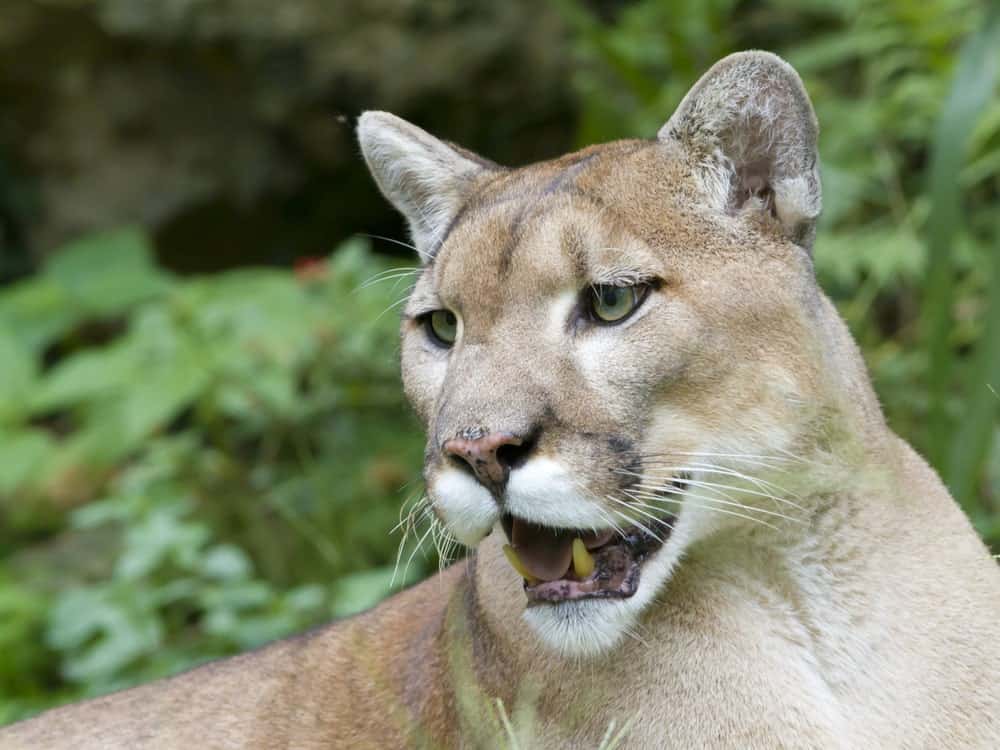
Why Roaring Big Cats Can’t Purr
The same physical structure in a cat that enables them to roar makes purring practically impossible.
Big roaring cats have tough cartilage that runs through the hyoid bone and up to the base of the skull. However, the hyoid bone is flexible and only partly attached to the cat’s skull with an elastic ligament.
This flexibility is what prevents big cats from purring and enables them to roar. Since the larynx is more flexible in these big cats and they have large and fleshy vocal cords, these cats can produce a deep and powerful roar.
A lion’s roar can reach 114 dB (about as loud as an emergency vehicle’s siren) and be heard as far as 5 miles (8 km) away!

Which Big Cats Can’t Purr?
Big cats that roar can’t purr. Here, we list those cats and add other sounds that they typically make other than roaring.
1. Lions
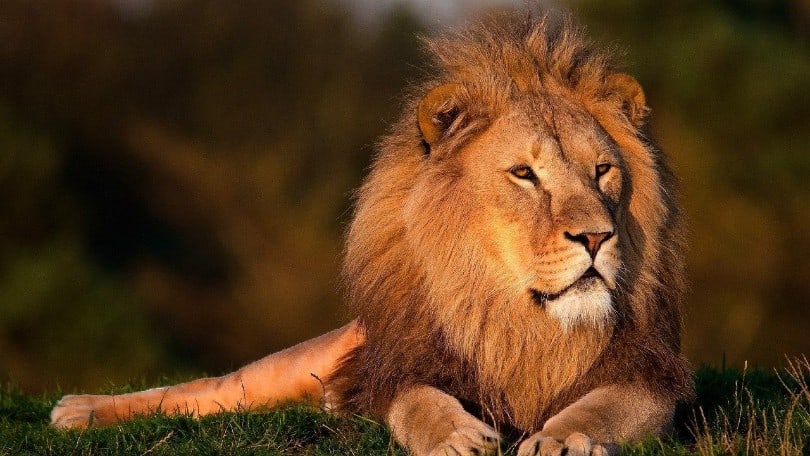
Lions are the most famous roarers of them all! African Lions (Panthera leo) are only found in the grasslands of Africa.
The sounds that they make depend on the circumstances, of course. They typically communicate with low-pitched grunts of different pitches and volumes.
They can make a purring-type sound, which is not an actual purr but is more like gurgling and a rolling growl. They also moan and do a kind of huffing and puffing.
Lions growl and snarl too. All these vocalizations combined with body language give them a relatively sophisticated communication system.
2. Tigers
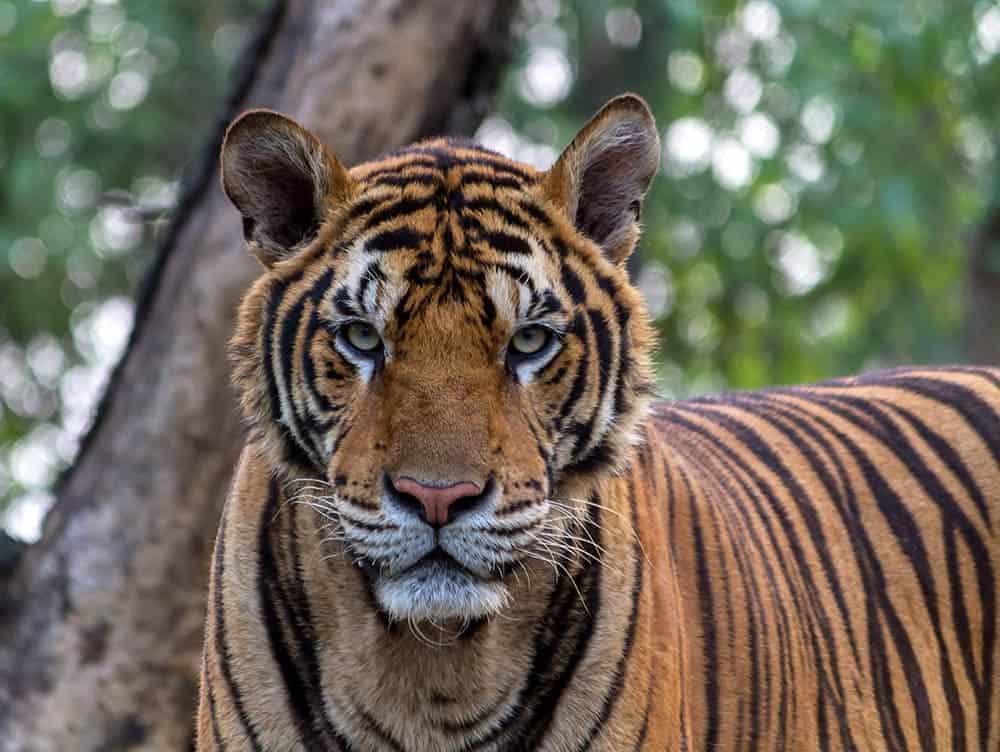
There are several different tiger subspecies:
- Bengal Tiger (Panthera tigris tigris) is the most common and largest of the big cats and is native to India.
- Siberian or Amur Tiger (Panthera tigris altaica) can be found in East Russia and Northeast China.
- South Chinese Tiger (Panthera tigris amoyensis) is native to Southcentral China.
- Indo-Chinese Tiger (Panthera tigris corbetti) is found in Southeast China.
- Sumatran Tiger (Panthera tigris sumatrae) is from Indonesia.
Tigers communicate through roaring, which can be heard up to 1.8 miles (3 km) away. They also use moaning or groaning sounds and chuffing, which is almost akin to purring because it’s used in greeting with other tigers. They also make coughing sounds, which means they are nervous or uncertain.
3. Jaguars
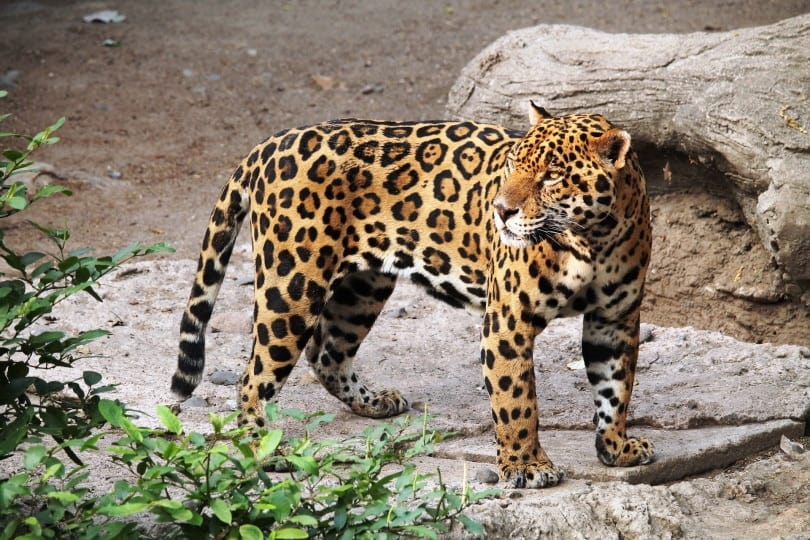
Today, jaguars (Panthera onca) are found in the Amazon rainforest, mainly in Brazil. They are the third largest cat after the tiger and lion.
Jaguars have a low-pitched roar, but the most common vocalizations are snoresor grunts. They can make a sound almost like a barking cough, and like tigers, they also chuff.
4. Leopards
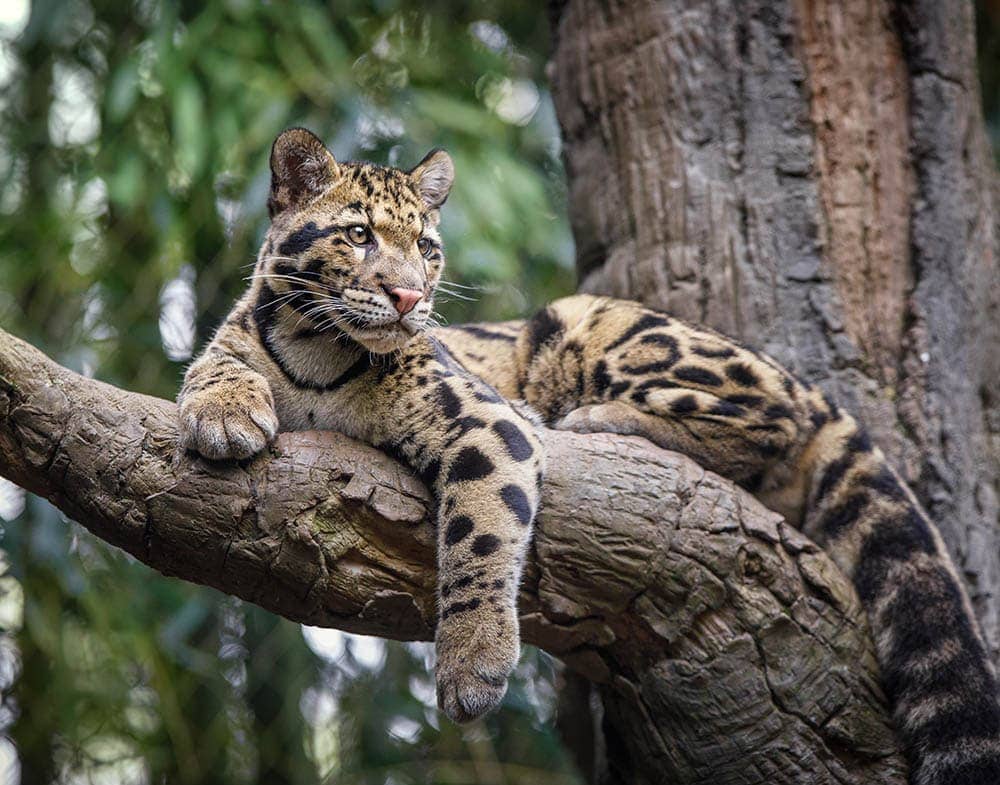
Leopards (Panthera pardus) are related to the three other big cats (all four cats share the common genus of Panthera) and are commonly found in Africa but also Central Asia, China, and India.
Leopards are solitary animals and tend to be quiet. They are known for their roar that resembles sawing wood and is sometimes similar to a raspy cough sound. Each leopard has their own call that identifies them to other leopards.
They do their fair share of hissing, grunting, and growling, but they are generally quiet cats. However, there is one exception to the roaring rule: The Snow Leopard is incapable of roaring.
5. Panthers
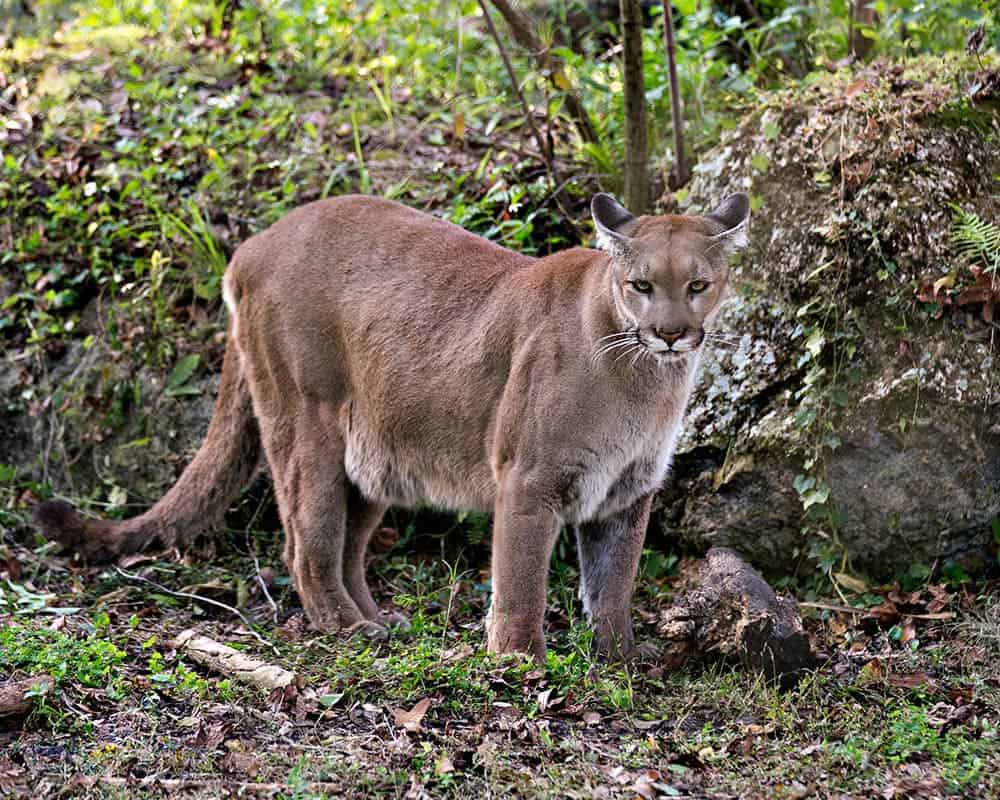
Panthers are not an actual separate species of large cat. They are the same species as any of the big cats, but with a black coat. They are most common among jaguars and leopards. The scientific name for panther is the same as the jaguar and leopard, Panthera pardus and Panthera onca, respectively. So, like the top four big cats, they roar and don’t purr.

Small Cats That Purr
You already know that domestic cats purr and don’t roar, but others join their ranks. Almost every other cat beyond the top four Panthera big cats don’t roar and are capable of purring.
A few of the smaller cats in the Felidae family that purr are pumas, bobcats, lynxes, wild cats, and ocelots. While they aren’t that small, cougars and cheetahs also don’t roar but purr.
Cheetahs have been placed into their own genus of Acinonyx because they aren’t capable of fully retracting their claws. That, combined with their unique chirping vocalizations and being the fastest land animal, makes the cheetah an amazing and unique animal!
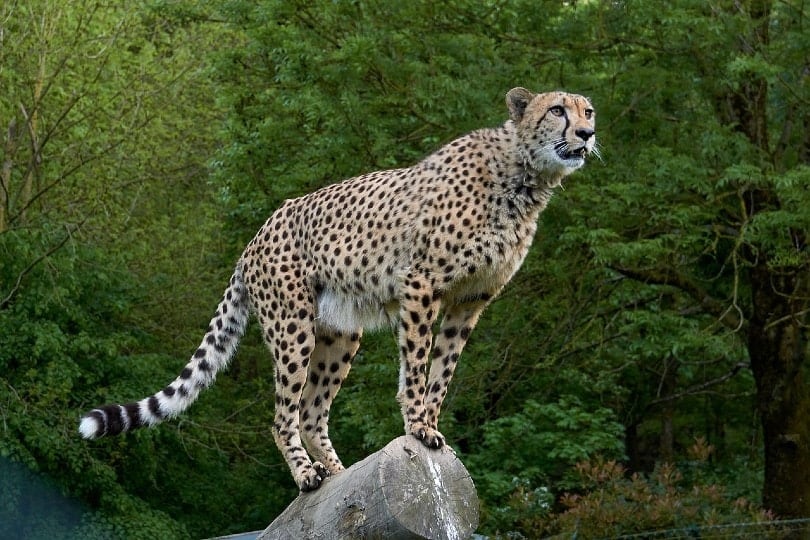
What About Meowing?
You may have heard that meowing is something that cats only do with humans and not other animals. This is just one way that cats try to communicate with us.
But house cats aren’t the only felines that meow; cougars, cheetahs, snow leopards, and lion cubs also meow. Meowing is typically used as a request for affection or food or sometimes to find each other.
So, when your cat meows at you, it’s their own unique way of talking to you, and they do it for many of the same reasons as bigger cats. Meows can be requests for food and affection or as a greeting, and sometimes, they can be the start of a warning.

Conclusion
Purring and roaring just don’t go together. Sometimes you might hear a tiger or lion emit a kind of purring sound, but this is usually a rumbling growl and not a true purr. True purrs usually sound continuous because the cat can purr while both inhaling and exhaling.
All cats use a variety of methods for communication: through vocalizations, body language, and sometimes by marking their territory. It’s not only cats that can purr, but animals such as raccoons, squirrels, bears, and foxes are also able to purr in some way.
Purring in all species is typically a sign of contentment or used as some form of self-medication or self-soothing. If you have a cat, you’re the lucky recipient of a purring machine, which has been proven to be relaxing and a stress-reliever.
Featured Image Credit: Mark Green, Shutterstock
